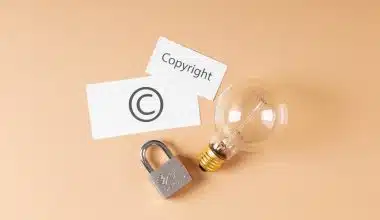Brand partnerships are vital to a wide range of businesses, from start-ups to large established businesses hunting down new audiences and creative ways to diversify their portfolio. It can be an effective way to build business, boost awareness, and break into new markets, and for a partnership to truly work, it has to be a win-win for all players in the game.
In short, audiences from both sides need to find value in the new product.
With the right partnership marketing strategy, you can breathe new life into your marketing efforts and leverage a larger resource pool to stimulate business expansion.
Key Points
- A brand partnership is a marketing strategy that involves joining forces with complementary brands to reach a wider audience.
- There are various types of partnership marketing available as valuable strategies if you want to thrive in the modern world of business.
- Benefits of brand partnerships include access to new audiences, extra value to your existing audience, and increased brand awareness and credibility, among others
- However, this marketing technique is only as effective as your planning and execution are sound.
- Several big-name brands have partnered with each other to increase brand awareness, drive market share, and expand their consumer base.
What Are Brand Partnerships?
Brand partnerships — or partnership marketing — involve forming an alliance with one or more brands to increase market reach. The purpose of forming an alliance with other brands is to leverage the combined resources and credibility of multiple brands to place products and services in front of new audiences and offer customers extra value.
All involved parties bring something unique to the table to create a mutually beneficial relationship that stimulates growth, drives the achievement of strategic business objectives, and hones brand identity.
Brand partnerships can be formed under umbrella organizations, or between several separate businesses from different industries. For the most part, collaborating brands are usually not direct competitors and might share little in common. It is, however, advisable to align business goals, set and track partnership campaign KPIs, and identify shared values that make the alliance viable to all parties involved.
Attached below is a checklist of the steps you should follow when considering a brand partnership:
How to suggest a brand partnership
Types Of Brand Partnerships
Depending on your business objectives, there are several types of marketing partnerships and approaches to consider. These include:

#1. Co-marketing partnerships
In a co-marketing partnership, two or more brands agree to promote each other through joint marketing activities like social media contests, co-hosted webinars, and more. This relationship typically is more casual, with no formal contract (although companies may institute agreements for each joint project).
#2. Affiliation partnerships
An affiliation partnership or affiliate marketing refers to a company collaborating with a website or magazine publisher to promote its products online. The publisher receives a commission depending on the number of clicks, leads, and revenue for the branded company they generate.
#3. Sponsorship
Sponsorships involve one brand investing in another’s endeavors (e.g., online or live conferences, and events). The sponsoring brand receives perks like the opportunity to set up a booth and market to attendees while the sponsored brand is compensated with money or free products.
#4. Loyalty partnerships
Many companies implement loyalty programs into their business models to maintain customers and generate leads. These programs typically function on a points system, where customers receive rewards, such as discounts or special events, for a subscription fee or continual purchase of that company’s products. Loyalty programs offer an opportunity for brand collaboration with loyalty members receiving exclusive access to a different company’s branded products.
This partnership aims to incentivize customers to remain or join a loyalty program.
#5. Co-branding or integration partnerships
Co-branding partnerships, also known as integration partnerships, occur when two or more brands work together to create a new product, whether it’s a physical item, an online service, or software.
#6. Joint product partnerships
When two companies collaborate to create a new product, they form a joint product partnership. You can employ this type of partnership in various ways, such as “powered by” or product mergers. “Powered by” occurs when a software provider collaborates with another company to market their mobile phone, computers, or automotive as being powered by its proprietary technology.
Examples of Brand Partnerships
#1. Balenciaga & Crocs
Balenciaga and Crocs have been making headlines with their fun fusion of aesthetics since 2018. But the most recent pairing got a boost from Eliot Page on the red carpet in 2022.

These brands clearly align in their dedication to innovation and individuality. As Balenciaga Creative Director Demna states in GQ “I am not interested in anything average, including the average consumer…if someone is personally offended by Crocs, there might be a more serious problem within that person than the design of a shoe.”
#2. The Travis Scott Meal McDrop
The collaboration between McDonald’s and rapper Travis Scott was unexpected, to say the least. However, if you’re a brand making your foray into the world of drops like McDonald’s, then Travis Scott is the celebrity to attach yourself to. Scott’s done hugely successful collaborative drops with Sony, Nike, Dior, YSL, Fortnite, Reese’s Puffs, and many more major brands.
This collaboration saw McDonald’s selling Scott’s favorite order as the “Travis Scott Meal”. If you’re wondering, it’s a Quarter Pounder with cheese, bacon, and lettuce, along with chips, BBQ sauce, and a Sprite with extra ice.
This collaboration was so successful it led to a shortage of ingredients at many restaurants. McDonald’s has since continued their collaborative meal promotions, dropping meals with J. Balvin, BTS, and Saweetie.
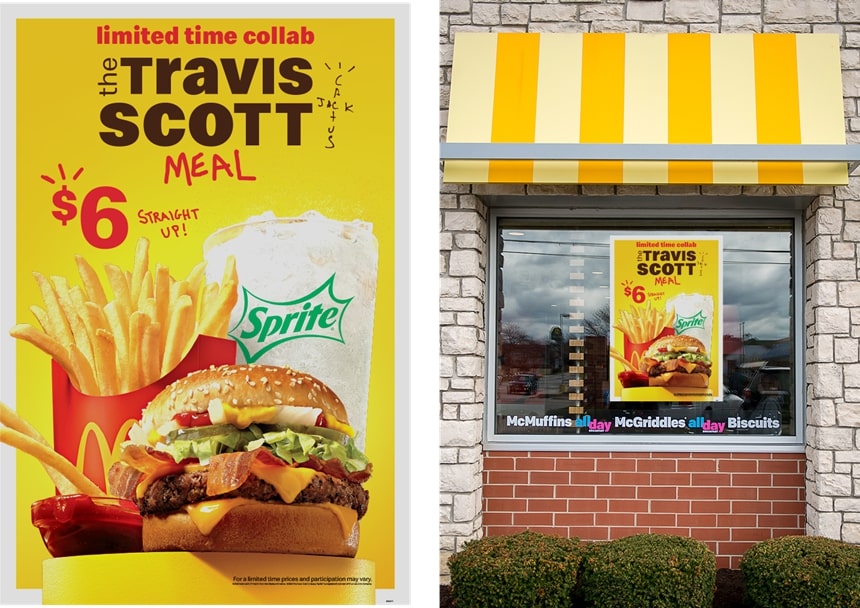
#3. Rachel Comey, Victor Glemaud, Sandy Liang, Nili Lotan & Target
Anyone designer-conscious person knows high fashion and Target aren’t exactly the same caliber regarding quality. Dresses by designers like Sandy Liang go for around $600, whereas Target dresses go for more like $35 a pair. The gulf couldn’t be wider.
However, that discrepancy in pricing is exactly why these designers and Target decided to partner with one another. To support its brand positioning as trendy and fashionable, Target paired with high-end fashion designers Rachel Comey, Victor Glemaud, Sandy Liang, and Nili Lotan to offer exclusive branded items for a limited time.

This partnership allows high-end designers to expose their name to a new generation of potential consumers, who will increasingly aspire to own more pieces from those high-end collections. It also further reinforces the idea that Target can be a store to find fashion-forward clothing.
#4. NYC skatewear meets Parisian luxury
Louis Vuitton’s collaboration with Supreme was a landmark moment for product drops. It saw the underground skater brand that popularized the product drop trend team up with one of the oldest and most prestigious luxury brands.
This brand collab is made all the more fun because less than two decades before the drop, Louis Vuitton hit Supreme with a cease and desist for using their logo.
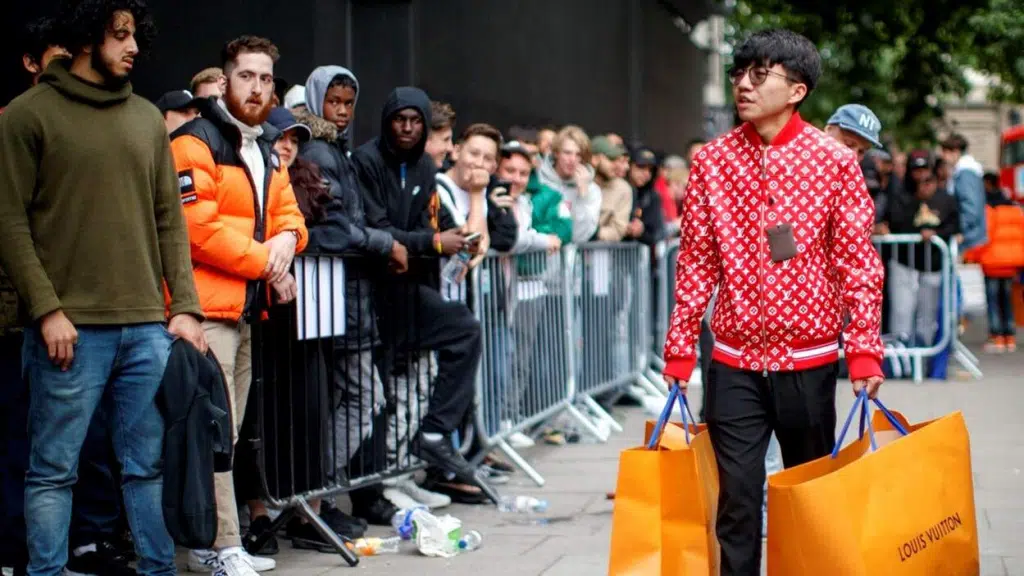
Fans camped outside stores around the world for days prior to this drop. The crowds were so large and excited, that police in LA and NYC had to shut down the event. The drop sold out almost immediately, and within a day, items were going for twice the retail price on resale markets.
#5. Apple & MasterCard: Apple Pay
Sometimes, brand partnerships don’t limit themselves to simply being cool projects between two companies — they actually have practical value when the companies work together.
When Apple released the Apple Pay app, the brand effectively changed how people perform transactions. This app allows people to store their credit or debit card data on their phones, so they can use them without physically having the card with them. However, for this app to succeed, it needs credit card companies to integrate with this technology. By the same token, credit card companies also face more competition if they aren’t compatible with the latest consumer purchasing tool.
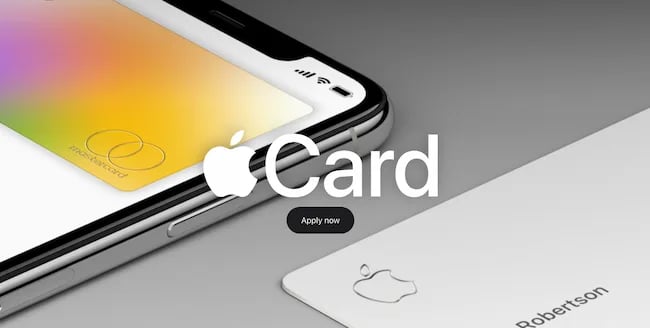
To get ahead of its competition, MasterCard became the first credit card company to allow its users to store their credit and debit cards on Apple Pay. This relationship continued to be useful for both Apple and Mastercard with the release of the Apple Card. MasterCard not only shows continuous support of a major consumer tech developer in this partnership — it evolves with its customers in how they choose to make purchases.
#6. GoPro & Red Bull: Stratos
GoPro doesn’t only offer portable cameras, and Red Bull doesn’t just sell energy drinks. Instead, both have built themselves as lifestyle brands — specifically, ones that are action-packed, adventurous, brave, and typically somewhat extreme. These common ideals make them an ideal match for co-branding efforts, particularly those involving extreme sports.
To make the partnership work, GoPro provides athletes and adventurers from all around the world with the equipment and funds they need to film races, stunts, and action sports events from the athlete’s point of view. At the same time, Red Bull utilizes its knowledge and reputation to organize and fund these events.
While GoPro and Red Bull have collaborated on several events and projects together, perhaps their biggest collaboration stunt was “Stratos,” where Felix Baumgartner jumped from a space pod more than 24 miles above Earth’s surface with a GoPro strapped to his body.
Not only did Baumgartner set three world records that day, but he also embodied the value of reimagining human potential that defines both GoPro and Red Bull.
#7. Pokémon x Van Gogh brand partnership
In this brand collab, the Van Gogh Museum teamed up with Pokémon for a collection of post-impressionist paintings of the famed Japanese “pocket monsters”.
The exhibition was popular, but the collab’s merch was the real star of the show. It attracted so much traffic that it took the Museum’s site down and they rescheduled the drop indefinitely. Those lucky few who nabbed the merch have already listed them on resale marketplaces, where they’re selling for up to $700.
Imagine trying to explain that to the 19th-century painter.
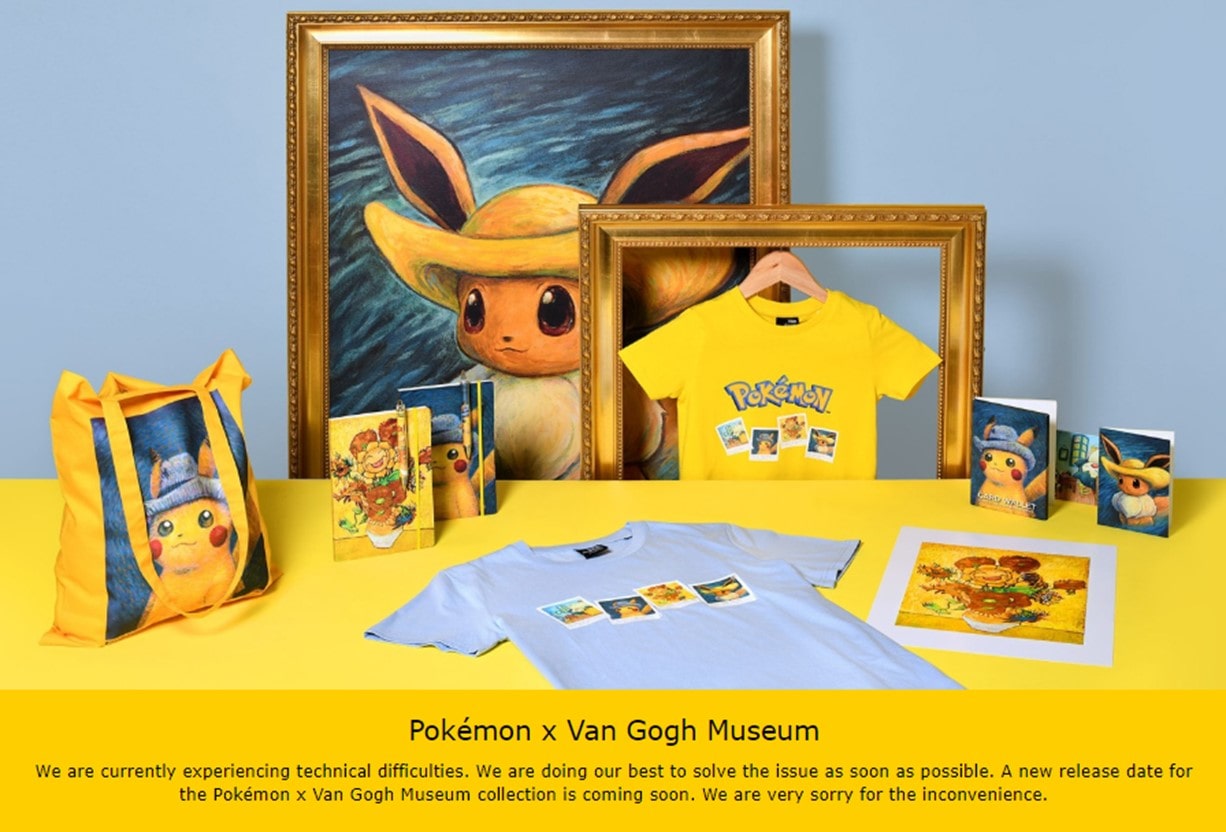
#8. Kanye, Gap & Balenciaga drop garbage bags full of clothes
No stranger to controversy, Kanye West made headlines after insisting his latest Gap and Balenciaga brand collaboration be stocked in massive garbage bags in Gap stores.
As it turns out, there’s a reason stores put their clothes on hangers. The collab had thousands of fans scrambling through the giant bags, struggling to find the items they wanted in their sizes.
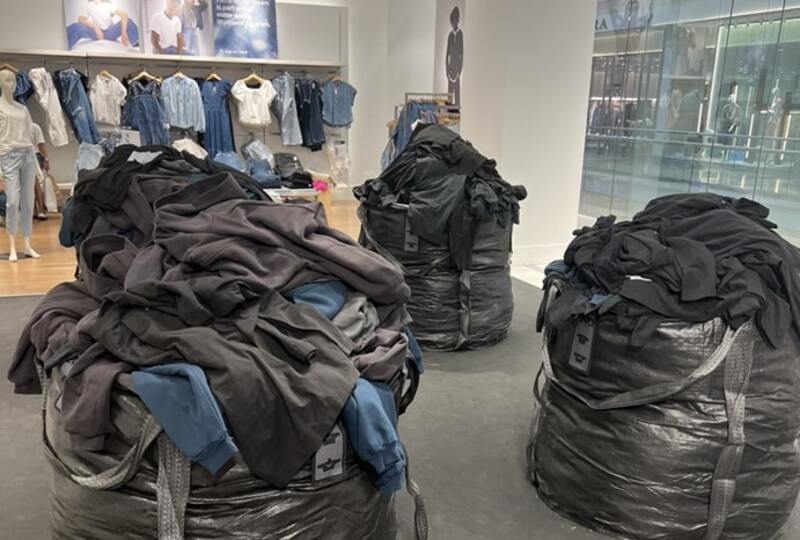
Gap, of course, obliged Kanye’s vision. After all, their collaborative drops with Kanye have seen their biggest sales days of all time. Gap’s CEO Sonia Syngal said: “Our newest Yeezy Gap icon, the Perfect Hoodie, delivered the most sales by an item in a single day in Gap.com history … With over 70% of the Yeezy Gap customers shopping with us for the first time, this partnership is unlocking the power of a new audience for Gap, Gen Z plus Gen X men from diverse backgrounds.”
Unfortunately, Gap’s 10-year brand partnership with Yeezy was not to be. The brand was one of several to cut ties with West after his antisemitic remarks in late 2022.
#9. BMW & Louis Vuitton: The Art of Travel
In their partnership, BMW created a sports car model called the BMW i8, while Louis Vuitton designed an exclusive, four-piece set of suitcases and bags that fit perfectly into the car’s rear parcel shelf.
Although the four-piece baggage set costs $20,000, it was a reasonable deal, since the BMW i8 begins at $135,700. At that price, that baggage set seems like an absolute steal. The baggage not only fits properly in terms of size, but its form and look complement BMW’s image: sleek, masculine, and high-quality. Carbon fiber, a strong yet lightweight composite material, is also used in the luggage and several interior components of the automobile.

Both brands knew their target market desired luxury and meticulous craftsmanship. By selling complimentary high-quality products, the brands successfully garnered attention from respective loyal customers.
#10. BTS x LEGO
If you’re looking to drive hype, one of the best brand collaborations you can get is with K-pop supergroup BTS. Their fans are dubbed called “the army”, and with good reason—they charge at just about anything with BTS’ name attached to it.
When singer Junkook ate Samyang Spicy Ramen on livestream, the Samyang site crashed. When V took the cover of ELLE magazine Korea wearing Celine, Celine’s website crashed.
So when LEGO released a BTS Lego set, you can probably guess what happened.
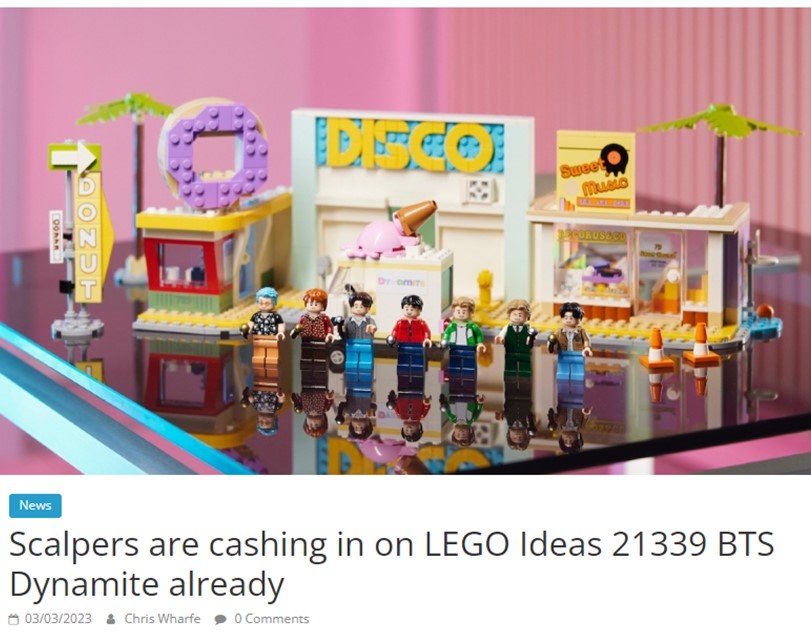
#11. Adidas enters the metaverse with massive NFT drop
Adidas made a splash in the NFT world after releasing a collaboration with some of its biggest names. Teaming up with Bored Ape Yacht Club, PUNKS Comic, and gmoney, they released NFTs that gave access to real-world limited-edition merchandise and much more.

The NFT drop was a massive success. Adidas not only made $24 million off the drop, but also made a name for itself in the Web 3 world and lifted the valuations of its collaborators’ projects in the process.
Benefits of Brand Partnerships
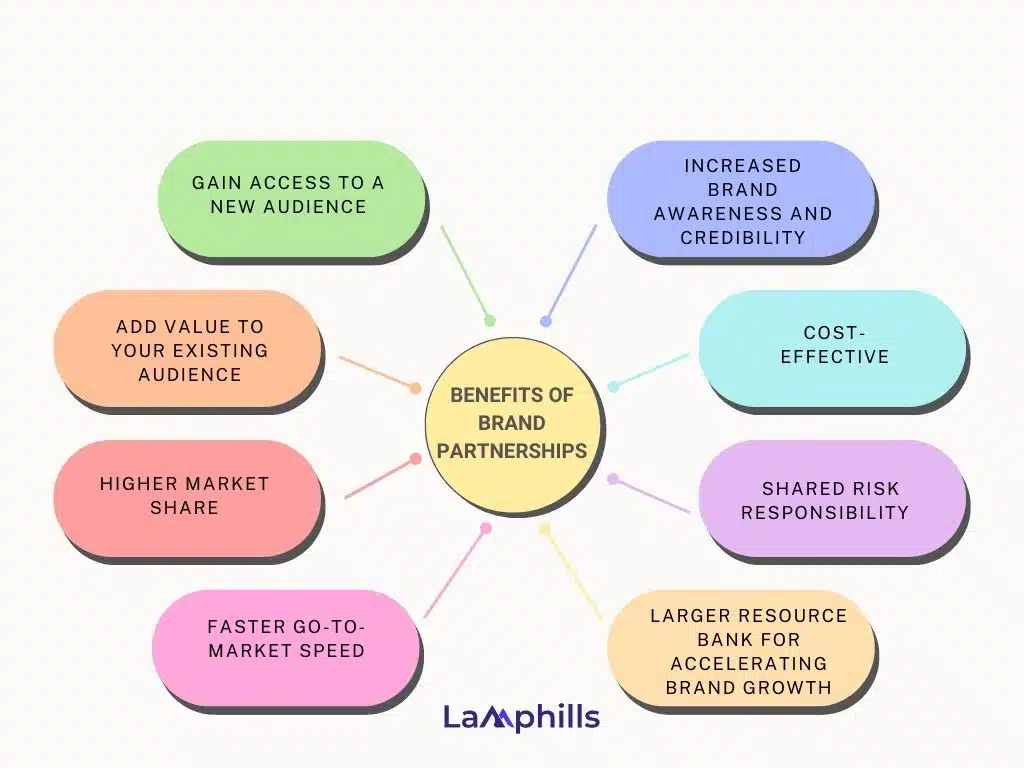
#1. Gain access to a new audience
Marketing your products and services to untapped markets is perhaps the most important advantage of partnership marketing. You can augment your outreach efforts by collaborating with other brands to create a one-of-a-kind marketing campaign.
The main objective is to offer both sets of customers added value and incentives and create additional revenue and growth opportunities for brand partners. Partnership marketing helps businesses avoid the cost and difficulty of trying to develop a new customer base from scratch. Traditional methods of achieving the same methods are often time-intensive. Brand partners, on the other hand, already have a meaningful relationship with the audience you want to convert.
Promoting your product through them allows you to effortlessly reach and understand this new market in a way that cold marketing cannot replicate.
Loyal customers of partner brands will be open to trying your products and services, even when they might not have considered them on their own. This allows you to benefit from the value of your partner to reach a new market.
Brand partnerships also tend to generate some excitement beyond the existing audiences associated with partner brands. The unique nature of the alliance creates a distinctive backdrop that sparks curiosity and penetrates markets that were otherwise untapped by all the partner brands. Each partner gains access to a mutual but potentially untapped audience.
Brand partnerships are essential if you want to boost your brand’s perception and increase revenue generation by driving sales.
#2. Increased brand awareness and credibility
When partnering with established and trusted brands you have an increased chance of gaining their audience’s confidence. Access to a new audience, who are more likely to convert because of your relationship with a trusted brand will significantly impact your reputation and boost your credibility among potential new customers and even your existing audience.
Partnership marketing is a powerful tool for building brand awareness and discovering valuable distribution channels. This can be a lifesaver for companies that want to stay relevant in their industry. This is especially crucial for small businesses and start-ups with budgeting concerns. A well-executed partnership campaign is a cost-effective approach that exploits the benefits of brand collaboration to reach new markets.
With a strategic partnership in place, that loyalty can be extended to a partner brand’s products and services in a relationship both parties mutually benefit from. Endorsement from both sides involved in an alliance through partnership marketing strategies such as affiliate marketing, modern barter exchange, and cross-promotion encourages the customers to explore products that they might otherwise never consider.
#3. Add value to your existing audience
You must always consider the extra value you can offer customers before committing to a partnership. Partnerships leverage the combined weight of expertise, experience, opportunities, and resources in alliances to create improved solutions that meet— and exceed — customer expectations.
In essence, it allows you to build your brand’s customer experience (CX) and Lifetime Value (LTV) which encourages customer loyalty and boosts retention and engagement.
Forming alliances with other brands can spur growth for your business in different ways as customers form lasting bonds with businesses over time and are happy to continue patronizing beloved brands.
#4. Cost-effective
Partnership marketing can be an effective money-saving alternative to traditional advertising such as Pay Per Click campaigns and similar marketing strategies, if you’re operating on a limited marketing budget. Approaches like “barter exchange” allow you to explore unconventional approaches to selling products. Bartering (exchanging products and services) is valuable for start-ups with limited cash flow.
The right partner relationship can put your products in the hands of your target audience, creating a memorable interaction with your brand at no cost.
#5. Higher market share
Brand partnerships provide a platform to help brands achieve their business goals. This often includes increasing the market share to drive growth and expansion. Partnership marketing helps you create innovative and unique solutions to offer your customers. This could include bundling partner brand deals and offers within the packaging you deliver to your customers or offering discounts on partner offerings based on customer loyalty.
It gives all the partner brands a competitive edge in their respective industry as they can boost profits with these amazing incentives. The result is a direct increase in Return on Investment (ROI) and a higher market share.
#6. Shared risk responsibility
Projects to release new product lines, penetrate an untapped market, or switch to a new industry can be daunting prospects with significant risks. A digital brand partnership with an established business in the destination niche or with experience with the new market can be a huge advantage.
In such cases, you share the risk of the new venture with your partner. This lessens the challenge and allows you some wiggle room if things don’t go entirely according to plan.
Brand partnerships can be executed in several ways depending on the brands involved. It can mean co-creating a new product or collaborating for an event or a marketing campaign to promote your brand. Alliances could also see businesses share technology, manufacturing resources, and even expertise.
#7. Faster go-to-market speed
A digital partnership has the potential to help you reduce the delays and costs of launching offline marketing campaigns. Slow speed-to-market is among the major challenges affecting the success of marketing campaigns.
With the help of technology, your partnership campaign can help you overcome those barriers via a white-label platform that eliminates the need for devoting internal resources to setting up and managing your marketing campaign. It also helps reduce your reliance on traditional marketing channels like email and social media.
Digital partnerships also facilitate long-term exposure for partners, delivering equal reciprocal value for marketing efforts.
#8. Larger resource bank for accelerating brand growth
Every business is crafted uniquely, with different ideas on the best investing methods and varying financial means. An alliance could allow you to benefit from resources that you might otherwise not have access to.
The low cost of partnership marketing is due to a variety of factors. When you combine marketing efforts with other brands, you have access to a larger resource bank which can drive business growth.
By associating with a partner with a strong and positive brand reputation, a business can leverage this to enhance its own brand equity. Partners also provide a wealth of new insights and experiences that may significantly improve your marketing initiatives.
Partnership marketing is even more beneficial if you’re breaking into a new market. It often takes a lot of money to create brand awareness when entering a new market. In an alliance, you can benefit from your partner’s reputation and credibility to establish your brand as a viable option in your industry.
Collaborating with trustworthy brands endears your brand to their audience. An alliance is a vote of confidence from both sides and directly affects the way customers interact with both brands. This underlines the importance of picking the right partner to build on that good reputation and boost your brand credibility.
Recommended Articles
- 9 Personal Branding Hacks for Insane Growth in 2024
- PR for B2B Companies: Tailoring Your Approach to Reach Decision-Makers
- SENSORY MARKETING: Best Strategies To Boost Your Brand Experience
- 10 Most Resounding Influencer Marketing Fails in History (Lessons to Learn)
- How to Monitor Competitors in 10 Effective Steps
- How To Check A Company’s Reputation in 2024 (Simplified)



